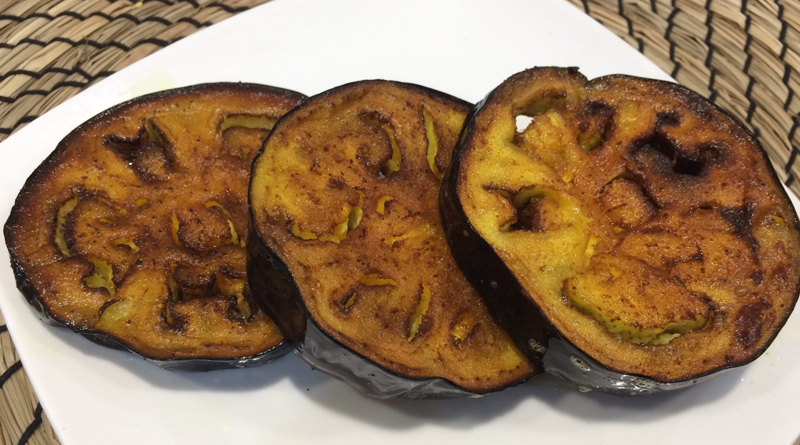Farmers — not activists — prove the case for genetically modified brinjal
Haryana has cracked down on genetically modified (GM) brinjal (eggplant). This variety passed field trials back in 2009, but was stalled by alarmist activists, who bludgeoned a timid government into a moratorium.
Meanwhile, GM brinjal passed field trials in Bangladesh, was certified for production in 2013, and thrived there. Seeds of GM brinjal are being smuggled into India, and grabbed by farmers for yielding more with much less pesticide use.
GoI hates being portrayed as cracking down on farmers. So, it claims, along with activists, to be cracking down on unscrupulous dealers foisting dangerous seeds on poor innocent farmers. This is plain rubbish. Farmers know infinitely more than activists or scientists about what works and what doesn’t.
Planter’s Punch
The government launched the Green Revolution in rice in the 1960s with varieties like Taichung Native 1 (TN-1) and Tainan-3. Farmers rejected these. Then came a better variety, IR-8, which won limited acceptance. Only with the introduction of IR-20 did farmers switch wholesale to high-yielding varieties.
Lesson: if farmers are rushing into GM brinjal today, it is because they know that it is good for them, regardless of what activists say.
The news item on the Haryana crackdown on GM brinjal spoke indignantly of laws violated and farmers duped. Yet, it revealed that dealers of GM brinjal saplings were charging seven times as much as for ordinary brinjal, which was susceptible to pests like shoot-borers.
Two farmers in Haryana had bought 1,200 saplings each at seven times the normal price, so confident were they of the outcome. I cannot think of better evidence that India urgently needs GM brinjal. Forget outrageous claims of activists that a variety declared in Bangladesh is unsafe in India.
Farmers of India, unite! Defy stupid laws prohibiting GM crops and grow them wherever pirated or smuggled seeds are available. That is what you did in the case of GM cotton in the 2000s. It ultimately forced the government, shamefacedly, to regularise what was till then illegal.
Sundry activists had published papers claiming to show that GM cotton was disastrous. Farmers rightly ignored these supposed research findings as ideological rubbish. In practice, cotton yields doubled even as pesticide use declined. Cotton acreage, production and exports shot up.
The same ideologues — ranging from leftists opposing Western seed companies, to RSS ideologues swearing by desi varieties — that once opposed GM cotton are currently thwarting GM brinjal. If farmers grow it nevertheless, GoI will be forced, as before, to rescind its stupid regulations.
GM cotton was the second time that mass public defiance forced the government to abandon stupid laws curbing freedom for producers and consumers. TV was for decades a government monopoly, used as a political propaganda tool. Technology allowing TV programmes to be broadcast across the world was condemned by leftist intellectuals as invasion of Indian airwaves.
Then came the dish revolution and CNN’s aim to go global. During the 1991 Gulf war, Indians installed dishes in droves to hear CNN. The dishes were illegal. So was the distribution of dish signals to consumers.
But public demand was so great that hundreds of small companies strung wires across residential colonies to illegally supply international TV. Later, Indian companies led by Zee began broadcasting to India from abroad.
Food Feud
After trying for years to stop this, GoI finally gave in. It legalised private entry to TV supply and transmission. This, in turn, created millions of highquality jobs, improved consumer satisfaction enormously, and revolutionised entertainment and sports.
The arguments against private TV were eerily similar in some respects to those raised against GM crops. Leftists, as well as RSS, screamed that Indian culture would be crushed by foreign influences (which some called ‘Coca-Colonialism’). Indian TV viewers were portrayed as innocent simpletons being exploited by filthy foreigners and sleazy Indian dealers.
There was much talk of sovereign rights, but none of the rights of Indian producers and consumers. There was much talk of foreign TV being dangerous for Indian health, the same argument now advanced against GM crops.
For decades, Nobel laureate Norman Borlaug, father of the Green Revolution, condemned anti-GM activists as charlatans ignorant of science. So did science writer Matt Ridley, author of Genome. Chengal Reddy, president, Federation of Indian Farmers Associations, says GM is a must for farmers.
GoI formally accepts that GM varieties for industrial crops like cotton are safe, but not for crops for human consumption. Sorry, but cottonseed from GM cotton has, for over a decade, been consumed in India, directly and in the form of vanaspati. Cottonseed oilcakes have been fed to cattle, poultry and fish, so the Bt genes are entrenched in India’s food chain, including dairy products and meat. No danger has ever been proved.
GM foods are common in the US. Over one trillion GM meals have been eaten in the US without damage. If GM foods are perfectly safe for millions of non-resident Indians and tourists visiting the US, can they really be dangerous for Indians in India? This is farce, but tragedy too.


